Category Archives: SHTF
GERM OUTBREAK AT CDC – Security lapses found at CDC bioterror lab in Atlanta
A federal bioterror laboratory already under investigation by Congress for safety issues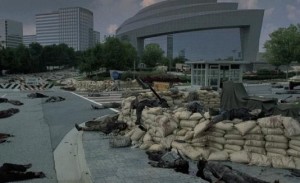 has had repeated incidents of security doors left unlocked to an area where experiments occur with dangerous germs, according to internal agency e-mails obtained by USA TODAY. In one incident, an unauthorized employee was discovered inside a restricted area.
has had repeated incidents of security doors left unlocked to an area where experiments occur with dangerous germs, according to internal agency e-mails obtained by USA TODAY. In one incident, an unauthorized employee was discovered inside a restricted area.
A Centers for Disease Control and Prevention spokesman says the unsecured door incidents in 2010 and 2009 inside its Emerging Infectious Diseases Laboratory in Atlanta were “not an acceptable practice of the agency.” At no time, though, were bioterror organisms such as anthrax at risk of falling into the wrong hands, he said.
“The doors in question here are but one layer of multiple layers of security when it comes to both the animals and the agents that are worked on,” CDC spokesman Tom Skinner said. “The security measures we have in place, without going into detail, make it close to impossible for anyone who doesn’t have approved access to the agents to get their hands on them.”
The e-mails document doors being left unlocked in the building’s high-containment lab block, which includes an animal-holding area and Biosafety Level 3 labs where experiments are done on microbes that can cause serious or potentially fatal diseases and can be spread through the air. Anthrax, monkeypox, dangerous strains of influenza and the SARS virus are examples.
One e-mail by a CDC safety manager describes an unauthorized man discovered in the animal-holding area and multiple doors that were unsecured at the time. Skinner says the man was a CDC scientist but was not immediately able to provide further details about why he was in the restricted area. Skinner said the man was in an outer corridor of the BSL-3 suite of labs.
For safety and security, access to BSL-3 labs is restricted and they are supposed to have special airflow systems designed to help keep organisms inside. Problems with the airflow systems revealed by USA TODAY, including a February incident where air briefly blew out of a lab into a “clean” hallway, prompted the House Energy and Commerce Committee this week to launch a bipartisan investigation into safety issues. The committee is examining whether CDC — which inspects its own labs along with others nationwide that handle bioterror agents — is complying with federal safety requirements at the lab building, also known as CDC Building 18.
E-mails written by CDC Safety and Occupational Health manager Patrick Stockton indicate the lab has had security lapses that Rutgers University biosafety expert Richard Ebright said may be a “major violation” of security standards for labs that work with potential bioterror agents.
In a November 2009 e-mail, Stockton wrote to several CDC officials involved with Building 18’s high-containment laboratory area: “We are continuing to have some difficulties with doors remaining unsecured in the (high-containment lab) area. … If we continue to have issues, we will need to begin looking at individual access rights for these doors.” The particular issue involved expansion sections of the doors, used to accommodate large pieces of equipment. The “through-bolts are not being re-engaged, and the doors are remaining unsecured,” Stockton wrote.
Five months later, the expansion doors continued to be left unlatched and unsecured. According to an April 29, 2010, e-mail to more than a dozen CDC officials involved with the lab building, Stockton wrote that earlier that day “an individual with no access and no escort” was found in the research animal-holding area of the high-containment lab area.
The e-mail continued: “He did not have access and at this point we are not sure how he got there.” Stockton wrote that he talked to program and animal staff and “no one from their programs let this person in.” CDC’s Office of Security and Emergency Preparedness, which is a liaison to the Department of Homeland Security, was investigating, the e-mail said. Homeland Security officials did not respond to questions about the CDC security incidents.
Stockton’s e-mail says that after the incident he and the building’s high-containment lab manager, Anthony Sanchez, walked the entire high-containment block and found two doors unsecured. “This can certainly happen by mistake on occasion but we have addressed this issue in the past and now it seems to be a common failure point. … It is imperative that all doors leading to high containment remain secured,” Stockton wrote.
Stockton and Sanchez didn’t grant interviews. CDC spokesman Skinner said: “Doors being left open by staff is not a standard practice. It’s unacceptable, and our safety office has sent out numerous reminders to staff of the importance of staff practicing good physical security.”
Skinner said he is unaware of any other door security incidents after the one in April 2010. He emphasized that multiple layers of security in the building would have prevented any unauthorized person from accessing germs that hold the potential to be used as bioterror weapons. “The bottom line is, worker safety and the public safety were never compromised,” he said.
Ebright, of Rutgers University, expressed concern about the repeated issues revealed in news reports about Building 18 since the $214 million building opened in 2005, including articles in 2007 about backup generators that failed to keep airflow systems working during a power outage, and in 2008 about a high-containment lab door that the CDC sealed with duct tape after an incident where an airflow system malfunctioned and sent potentially contaminated air into a “clean” corridor.
The “documents you have obtained over the past several years make it clear that there has been a pattern of corner-cutting and negligence at CDC biocontainment facilities —starting with the failure to include provisions for emergency backup power, and encompassing inadequate door seals, improper airflow, jury-rigged repairs, and unsecured access points,” Ebright said.
If the security issues described in Stockton’s 2010 e-mail continue and bioterror agents are being used in that area, Ebright said, “then heads should fall.”
The CDC currently is responsible for inspecting the safety and security of its labs that work with bioterror agents. Skinner said CDC has a 66-year record of operating its labs safely.
The CDC said this week, in the wake of USA TODAY’s reports, that it is considering having its labs’ safety reviewed by an outside agency, such as the U.S. Army Medical Research Institute for Infectious Diseases (USAMRIID).
Biosafety and biosecurity concerns have been the subject of previous congressional concerns. A 2009 report by the U.S. Government Accountability Office, the investigative arm of Congress, examined the potential risks posed by the growing number of high-containment labs doing research on potential bioterror agents. It found that while lab accidents are rare, they do occur, primarily because of human error and systems failures.
It also noted that insiders working in the labs can pose risks, pointing to the Federal Bureau of Investigation‘s allegation that Bruce Ivins, a scientist at USAMRIID in Fort Detrick, Md., was the “sole culprit” in the 2001 anthrax attacks. While he was under investigation in 2008, Ivins died of a drug overdose.
“There are arguably two aspects to insider risk: the motive of the insider and the ability to misuse material and laboratory facilities,” the GAO wrote in its report.
MIAMI ZOMBIE – No Bath Salts, Only Marijuana Found In Face-Eater Toxicology Tests
According to a full toxicology report released Wednesday afternoon by the Miami-Dade medical examiner, the only drug detected in the lifeless body of infamous Miami face-chewer Rudy Eugene was marijuana.
“The department’s toxicology laboratory has identified the active components of marijuana,” the medical examiner said in a statement, according to NBC Miami. “The laboratory has tested for but not detected any other street drugs, alcohol or prescription drugs…This includes cocaine, LSD, amphetamines (Extasy, Meth and others), phencyclidine (PCP or Angel Dust), heroin, oxycodone, Xanax, synthetic marijuana (Spice), and many other similar compounds.”
CBS Miami reports that the medical examiner’s office sought the assistance of an “outside forensic toxicology reference laboratory” to help confirm the absence of common ingredients of bath salts, a synthetic amphetamine cocktail blamed inseveral recent incidents that bear some similarity to Eugene’s attack.
“Within the limits of current technology by both laboratories,” stated a press release from Medical Examiner Dr. Bruce Hyma, “marijuana is the only drug identified in the body of Mr. Rudy Eugene.”
The report did not address previously reported autopsy findings of what appeared to be undigested pills in Eugene’s stomach, according to the Miami Herald, and an expert told the Associate Press marijuana alone was not likely to cause such an attack.
“The problem today is that there is an almost an infinite number of chemical substances out there that can trigger unusual behavior,” said Dr. Bruce Goldberger, Professor and Director of Toxicology at the University of Florida.Goldberger said that the medical examiner’s office in Miami is known for doing thorough work and that he’s confident they and the independent lab covered as much ground as possible. But it’s nearly impossible for toxicology testing to keep pace with new formulations of synthetic drugs.
“There are many of these synthetic drugs that we currently don’t have the methodology to test on, and that is not the fault of the toxicology lab. The challenge today for the toxicology lab is to stay on top of these new chemicals and develop methodologies for them, but it’s very difficult and very expensive.” Goldberger said. “There is no one test or combination of tests that can detect every possible substance out there.”
The medical examiner’s office did not immediately respond to requests for comment.
Eugene, 31, was widely speculated to have been on some form of synthetic drugs or suffering a drug-induced psychosis the afternoon of May 26 when he stripped naked and brutally attacked homeless resident Ronald Poppo in broad daylight along Miami’s busy MacArthur Causeway, chewing and ripping off roughly half of the older man’s face.
A police officer responding to multiple 911 calls shot and killed Eugene as he crouched over Poppo, reportedly refusing to stop the gruesome assault by growling at the officer with Poppo’s flesh in his mouth.
The 18-minute attack and its aftermath were captured on surveillance video from the Miami Herald’s parking garage, but it is still unknown what prompted Eugene to commit such a horrific crime.
According to Local10, the former North Miami Beach High School football player was once diagnosed as schizophrenic after an arrest, but authorities are not sure if he ever sought treatment.
Records show Eugene had been arrested 8 times since the age of 16, including 4 instances involving marijuana. But though he was once accused of threatening to kill his mother, friends and family members alike say they never expected such violence from Eugene, who was participating in a Bible study, reading the Koran, and telling friends he wanted to stop smoking marijuana.
“There’s no answer for it, not really,” Eugene’s younger brother, Marckenson Charles, told the AP. “Anybody who knew him knows this wasn’t the person we knew him to be. Whatever triggered him, there is no answer for this.”
Poppo, meanwhile, is doing “well,” according to doctors at Jackson Memorial Hospital’s Ryder Trauma Center. The 65-year-old has lost one eye, is missing his nose, and faces a string of surgeries to repair his wounds and reconstruct his face.
“We have mental health professionals to help him with the coping, and he’s coping remarkably well,” said plastic surgeon Dr. Wrood Kassira.
This is a developing story.
Zombie Prep – WHAT YOU NEED IN YOUR BUG OUT BAG
What is a Bug Out Bag?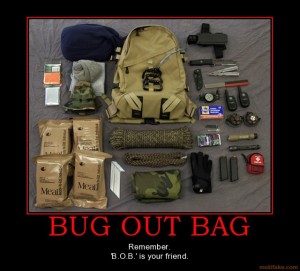
A bug out bag is a bag (or several) that is supposed to last you for at least 72 hours. The original term was derived from the term ‘bail out bag’ used by many military aviators. The idea soon passed into wide usage among other military and law enforcement.
A bug out bag is to contain items for both leaving an emergency situation as well as going into an emergency situation.
A bug out bag is not required in order to survive, but it is HIGHLY RECOMMENDED!
So where to start?
First things first, you need to determine what the bug out bag is going to be used for. In this case, we’re going to be building a bug out bag for the zombie apocalypse. There are many different types of bug out bags, which means you can have one bag designated for a specific circumstance, such as a fire, earthquake, flood, etc.
But, we’re just going to stick with making one for the zombie apocalypse, since that’s what we do best! Which also means, that we’re going to be recommending items that are meant to last for a long time, instead of just 72 hours.
You’ll need a sturdy backpack. Hikers backpacks are always a great item, since they’re meant for durability. But make sure it’s not a cheap backpack, out of everything, this is the item that you’ll want to spend a bit of money on. Because this backpack will basically be carrying your basics for survival – so get a quality backpack!
What items should I include?
Now here’s the fun part! We’ll recommend several items that we believe you should include in your bug out bag, but don’t take us word-for-word. While these items are highly recommended, you may find that something else works better for you.
1. Containers: Having several containers at your disposal will be extremely useful. These containers can be anything from, water bottles, little kettles, water proof tupperware, etc. When choosing your containers, make sure that you can fit other stuff within the container, that way the container serves multiple purposes. So find random little containers to carry in your pack.
2. Water: This should be a no brainer but the water that you carry with you isn’t going to last forever. You need to find ways to purify water. Such as a little pot to boil water. Or purification tablets. Or even a mini water purifier that they sell at any outdoors store. Whatever you choose, make sure it’s durable and will last for at least several weeks.
3. Food: Canned foods are NOT GOOD! They are bulky and heavy, which will slow you down. One of our members has a bunch of dried foods in zip lock bags that were full of calories and carbohydrates. You want foods that will fill you up quick and give you energy. MRE’s are also good if you can get your hands on them. You should also invest in some fishing wire and hooks, so you can fish for your food.
4. Shelter: The ‘space’ blanket is a favorite of most, and it’s a good choice. Also, poncho’s and poncho liners will be incredible for the cold. With either the space blanket or poncho, you can throw those on around you, light up a little fire inside your poncho and you’d be toasty warm! Plus you’d be protected from getting wet. Finding something that is lightweight and durable will be a shelter lifesaver. A hammock might not be a bad idea, either, since they are generally lightweight and you can string them up practically anywhere.
5. Fire: We don’t recommend flashlights, although they can be great for the first 72 hours, unless you have 100 different flashlights and batteries to go with them (which is impractical to begin with) then you’re going to need an alternative for flashlights. Glow sticks are a great alternative. So is flint and steel. Remember, zombies are attracted to light, so we recommend getting used to the dark and ONLY using fire and light when you’re cooking or need to read a map or compass. Candles and water-proof matches are also a good idea.
6. Weapons: Ah I bet you were just WAITING for this section, weren’t ya? We’re not going to recommend individual weapons, that’s based on personal preference. But instead, just make sure you have enough bullets to get you through for a while and MAKE SURE to use them sparingly. You never know when you’ll come across more ammo, so only shoot when your life depends on it. Also have a few melee weapons available, like knifes, axes, machete’s and such, if not for fighting, then definitely for small game hunting, skinning fish, etc. Find weapons both for survival and for defense.
7. Rope & tape: We recommend 550 cord. It’s the toughest and most long-last rope you’ll ever need or want. We also recommend carrying some duct tape – cause you never know when you’ll need duct tape!
8. Shoes: These don’t go in your bug out bag necessarily, but having the proper shoes will go a long way in keeping you sane. If you have a bulky pack on your back and you’re having to walk A LOT, then having a good pair of shoes will be a life-saver. Be sure to break the shoes in BEFORE it’s time to flee.
9. First aid: Some people are more obsessed with first aid than others. It’s at least a good idea to have a few alcohol swabs, bandages, pair of tweezers, tourniquet (or handkerchief), as well as other varied pieces of first aid that you think you may need.
10. Misc: The rest of the items in your bag will depend on personal preference. An extra pair of clothes perhaps (under armor is highly recommended), carabiners, Zombie Response Team patch (coming soon!), a little radio (for the first 72 hours (or until the batteries run out) to hear news about what’s going on), a mini solar panel (HIGHLY recommended), a hat (to protect your head from the sun and other elements), gloves, compass, really warm socks, a little sewing kit, deck of cards (never know, you may be bored), a picture of loved ones, etc. The list can go on and on.
That about covers it!
Man Eats Dog: High On Synthetic Cannabis, Waco Man Consumes Family Canine
A 22-year-old Texas man was arrested yesterday for allegedly attacking a neighbor 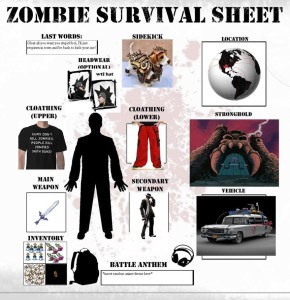 and eating his family’s dog alive.
and eating his family’s dog alive.
Michael Terron Daniel was allegedly high on a designer drug known as K2 at the time and was said to be “going crazy.”
Witnesses say Daniel informed residents at the Waco home where the incident took place that he was “on a bad trip from ingesting K-2″ — a type of synthetic cannabisknown to exacerbate existing psychoses — before getting down on his hands and knees and “chas[ing] a neighbor while barking and growling like a dog.”
He then proceeded to beat and strangle the family dog before biting into it, “ripping pieces of flesh away.” The dog was later pronounced dead at the scene.
According to Waco police Sgt. W. Patrick Swanton, officers arrived to find Daniel on the porch covered in blood. He asked the officers to fight him or use the stun gun “to help him get off his bad trip.”
Daniel was charged with felony cruelty to a non-livestock animal and booked into McLennan County Jail where he remains.
DOOMSDAY 2012 – NATURAL DISASTERS COULD WIPE OUT YOUR ZOMBIE WORRIES
Floods, earthquakes, and volcanic eruptions. These are just a few of the natural disasters that may befall our planet between now and December 21st, 2012. As we speak, the summer solstice is upon us, but it’s the winter solstice that we should be worrying about.
Flooding. There are several different scenarios in which massive floods may overcome our planet. One is oceanic rise. If the oceans rise, the coastal areas of the world will recede, and millions of people living in these areas will either die or have to move further inland. Global warming is currently being blamed for the Greenland ice sheets and polar cap melt off that has been going on for years. I think the majority of people are skeptical of this diagnosis, or just don’t know what to think, as scientists seem to fall on both sides of this debate. What no one can dispute is that this is happening.
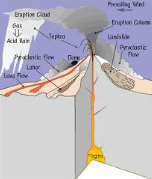
If solar flare/sunspot activity on 12/21/2012 should be great enough to gain entrance to our atmosphere on this day, it could accelerate the ice melt and the oceans will rise. If the temperature of the earth’s surface rises just a few degrees, this would also happen. How quickly, obviously no one knows. One thing rapid or even gradual ice melts will do is disrupt the thermohaline circulation of water in the Atlantic Ocean, an ocean-based system of heat delivery sometimes referred to as the North Atlantic thermal conveyor belt.
The northeastern States, eastern Canada and, primarily, Europe enjoy warmer climates than they otherwise would because of the thermohaline circulation. This vast ocean conveyor sweeps warm, salty water from tropical latitudes north along the surface. After shedding heat to the atmosphere, the chilled brine becomes denser and sinks. Thousands of feet beneath the surface it flows back toward the equator, completing the loop.
But as the climate warms disproportionately at the poles, the gears of the system begin to wobble. Freshwater runoff from Greenland’s ice cap and from melting glaciers across the Arctic, combined with increased precipitation, will form a thick, buoyant cap over the North Atlantic. Already, this gigantic vortex may be sputtering. The surface of the North Atlantic is becoming noticeably less salty, and thus less driven to sink.
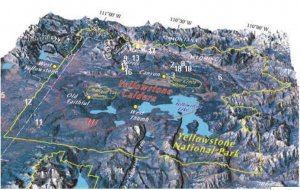 Thermohaline circulation shut down as recently as 8200 years ago, and some scientists contend that the Little Ice Age of 1300 to 1850 was due to a hiccup in the system. The chance of another collapse is hotly debated, in scientific circles, and may throw us into another Little Ice Age again.
Thermohaline circulation shut down as recently as 8200 years ago, and some scientists contend that the Little Ice Age of 1300 to 1850 was due to a hiccup in the system. The chance of another collapse is hotly debated, in scientific circles, and may throw us into another Little Ice Age again.
Earthquakes are a distinct possibility, and tectonic shift may occur. Tectonic shift and rise can be a direct result of earthquakes, as well as the weight and motion of melting water, among other things. It may well force the earth’s mantle to rise up and reform our planet.
Volcanic eruptions are a potentially catastrophic event that could be in store for us. The caldera at Yellowstone National Park, the World’s largest volcano, is said by scientists to be overdue for an eruption. This volcano is sometimes referred to as a Super volcano. There are over 3000 recorded earthquakes at Yellowstone National Park each year, and any sort of cataclysmic event on a worldwide scale may be the spark that 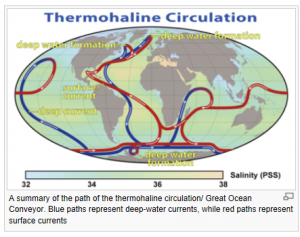 forces the caldera to erupt. That eruption, along with any others that may happen on that fateful day, 12/20/2012, would put enough volcanic ash into the atmosphere, as to blot out the sun for years, perhaps even decades. And then there are all the different types of gasses that will also be in the air, and oxygen purity levels will drop dramatically. Without Photosynthesis, a process whereby plants capture the suns energy to split off water’s hydrogen from oxygen. Hydrogen is combined with carbon dioxide to form glucose and release oxygen. If the sun is blotted out and plants can’t grow and capture carbon dioxide, while releasing oxygen, we may lose our ability to breath, among other things. This will also have a devastating effect on the global food chain. In my opinion, this will be the start of a fatal global downward spiral, from which there will be no return.
forces the caldera to erupt. That eruption, along with any others that may happen on that fateful day, 12/20/2012, would put enough volcanic ash into the atmosphere, as to blot out the sun for years, perhaps even decades. And then there are all the different types of gasses that will also be in the air, and oxygen purity levels will drop dramatically. Without Photosynthesis, a process whereby plants capture the suns energy to split off water’s hydrogen from oxygen. Hydrogen is combined with carbon dioxide to form glucose and release oxygen. If the sun is blotted out and plants can’t grow and capture carbon dioxide, while releasing oxygen, we may lose our ability to breath, among other things. This will also have a devastating effect on the global food chain. In my opinion, this will be the start of a fatal global downward spiral, from which there will be no return.
Last but not least. Again, in my opinion, the most probable occurrence will be an eruption of the volcano at Cumbre Vieja. Cumbre Vieja is an active volcanic ridge on the volcanic ocean island of Isla de La Palma in the Canary Islands, Spain. History has recorded volcanic eruptions of the Cumbre Vieja in 1470, 1585, 1646, 1677,m 1712, 1949, and 1971.
 During the 1949 eruption, three vents—Duraznero, San Juan and Hoyo Negro—opened and expelled massive amounts of lava. Also during the eruption two earthquakes happened centered near Jedey. Following the earthquakes a fracture appeared, approximately two miles long, about 1/10 of the exposed length of the Cumbre Vieja. Parts of the western flank of the Cumbre Vieja ridge moved about 1 mile sideways and 2 miles downwards towards the Atlantic Ocean. Scientists have hypothesized that an eruption or even an earthquake would send the western flank of the island sliding into the Atlantic Ocean, creating a Mega Tsunami of biblical proportions. Computer models indicate the resulting gravitational landslide will enter the Atlantic Ocean and create the so called Mega Tsunami, with the initial wave estimated at some 200 feet in height, and a peak to peak height of 1 mile. Estimated speed of the wave is 600 mph. It will reach the African coast in 1 hour, southern england in about 3 to 4 hours, and the eastern seaboard of the United States in about 6 hours. The initial wave will have subsided into a succession of smaller ones each about 100 to 200 feet in height, and may swell to 400 to 600 feet high at a distance of 1 to 2 miles apart, while retaining the original speed. Computer models indicate differing inland inundation measurements, between 15 to 30 miles or more according to the volume of water.
During the 1949 eruption, three vents—Duraznero, San Juan and Hoyo Negro—opened and expelled massive amounts of lava. Also during the eruption two earthquakes happened centered near Jedey. Following the earthquakes a fracture appeared, approximately two miles long, about 1/10 of the exposed length of the Cumbre Vieja. Parts of the western flank of the Cumbre Vieja ridge moved about 1 mile sideways and 2 miles downwards towards the Atlantic Ocean. Scientists have hypothesized that an eruption or even an earthquake would send the western flank of the island sliding into the Atlantic Ocean, creating a Mega Tsunami of biblical proportions. Computer models indicate the resulting gravitational landslide will enter the Atlantic Ocean and create the so called Mega Tsunami, with the initial wave estimated at some 200 feet in height, and a peak to peak height of 1 mile. Estimated speed of the wave is 600 mph. It will reach the African coast in 1 hour, southern england in about 3 to 4 hours, and the eastern seaboard of the United States in about 6 hours. The initial wave will have subsided into a succession of smaller ones each about 100 to 200 feet in height, and may swell to 400 to 600 feet high at a distance of 1 to 2 miles apart, while retaining the original speed. Computer models indicate differing inland inundation measurements, between 15 to 30 miles or more according to the volume of water.
This would greatly damage or destroy cities along the entire North American eastern seaboard, and tens of millions would be killed from Maine to Florida, and everything In between.
So there you have it. Not a pretty picture is it.
